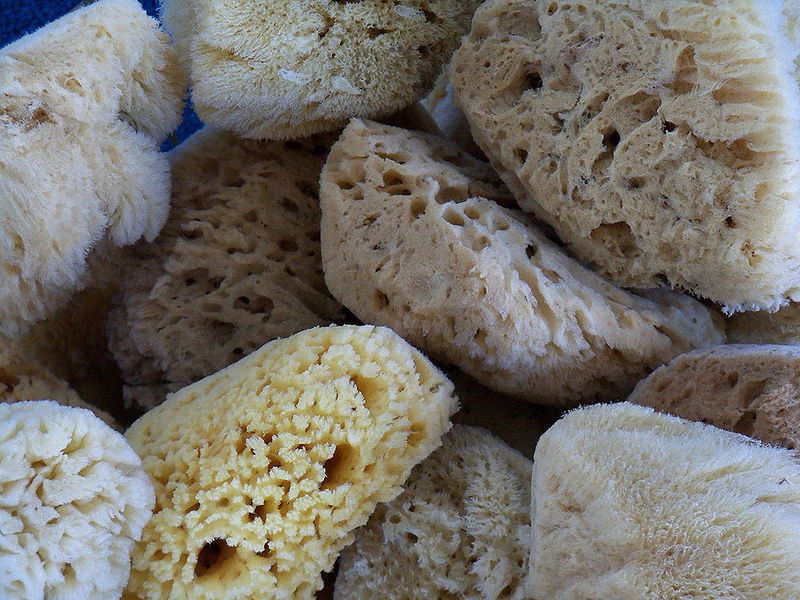What Best Describes the Feeding Habits of Sponges
Outer protein coat of a virus is called. Causes corals to die.

Sponges And Cnidarians Concepts Of Biology
The hawksbill sea turtle has a narrow head adapted for getting food from crevices in coral reefs.

. Grasses and trees create new soil that replaces the soil lost to the wind. Science Biology Concepts of Biology Describe the feeding mechanism of sponges and identify how it is different from other animals. Sea sponges as has been said do not have a locomotor system which is why they can not go where food is.
There are freshwater sponges too. The student observes a great blue heron catching fish near the edge of the pond. Examples of these are cellulose sponges abrasive sponges natural sponges and dry sponges.
Stages of food Step 1. Compare the structural differences between Porifera and Cnidaria. Some sponges are green because.
Which of the following best describes the feeding habits of sponges. They have photosynthetic organisms in their tissues. The dead remains of grasses and trees cement the soil to the ground and prevent the wind from blowing it away.
Causes coral to die. Hawksbills help maintain healthy coral reefs by keeping sponge growth in check which allows plenty of space and sunlight for corals to flourish. Animals that have a backbone or veretbral column are called.
_____ Which of the following best describes the feeding habits of sponges. Describe the feeding mechanism of sponges and identify how it is different from other animals. Coral bleaching is a serious ecological threat because it.
Which statement best describes the positions of the two elements in the periodic table. Samantha Fowler 2 others. Simbiotic Relationships Some sponges have organisms inside their bodies called photosynthetic symbionts Organisms that usually live in the body space of another without harming it which are very useful for their.
Allow the sponge to survive difficult environmental conditions The benefit of a sponges producing gemmules is. Compare the differences in sexual reproduction between Porifera and Cubozoans. All of the above.
Help to filter food for the sponge b. An adult hawksbill in the Caribbean can eat 544 kg 1200 lbs of sponges a year. Sponges absorb water through their pores where the porocytes are found and through flagellated cells -the coanocytes- the movement that allows the entrance of water to the spongocele or atrium is produced in addition to the phagocytosis of.
The best one would depend on the cleaning surface. That said the emphasis of these practice questions falls on Phylum Porifera choanocytes and spicule compositions. It is best to use soft sponges such as the natural.
There are many sponge species in which each sponge is considered male and female. All viruses are made of proteins and. Up to 24 cash back 28.
The energy needed by sponges and other. Sponges are the most primitive type of animal in existence featuring a cell-based organization where different cells have different tasks but do not form tissues. A student goes on a field investigation to observe the feeding habits of the birds.
Cnidarians have two basic body types a medusa and a. Most carnivorous sponges live in deep water up to 8840 m deep which the main reason of such feeding habits and the lackness of information about them. Sponges can reproduce sexually and asexually.
Describe the feeding mechanism of sponges and identify how it is different from other animals. How does the difference in fertilization. The body mechanism in which the product or result of a process stops or limits the process is called.
Explain the function of nematocysts in cnidarians. The roots of grasses and trees anchor the soil and prevent it from blowing away. Animals that have a backbone vertebral column are called.
Humans use bacteria to. The life cycle of a sponge is a relatively simple one. Many small aquatic organisms move oxygen and carbon dioxide through their skin by the process of.
When it comes to sexual reproduction a sponge can play either role. An animal is each of the following except. Sponges are extremely slow-moving or sessile filter-feeders that draw water through pores and specialized filter cells to gather food.
_____ The benefit of a sponges producing gemmules is that the gemmules a. Porifera or sponges are aquatic immobile invertebrates whose structure is saccular with an upper opening the osculus. Because the carnivorous sponges would remain sessile their prey would be nothing more than small mollusks and crustaceans.
The body mechanism in which the product or result of a process stops or limits the process is called. Like other animals sponges need food shelter living space and oxygen to live and reproduce have young. A way that bacteria cause disease.
The male sponge releases sperm into the water which travels towards and enters the female sponge. The world of sponges is a bit more vast than you might be aware of. Which of the following best describes how this solution works.
Only 5 of animals have. The student records information from research and observations in the table. Aquatic animals that strain floating plants and animals from the water that they take in are.
Coral bleaching is a serious ecological threat because it. Sponge larvae young settle on one hard surface and then live their lives attached to that surface unable to move around to seek food or avoid predators. Are a form of sexual reproduction c.

Phylum Porifera Characteristics Examples With Question And Videos

No comments for "What Best Describes the Feeding Habits of Sponges"
Post a Comment